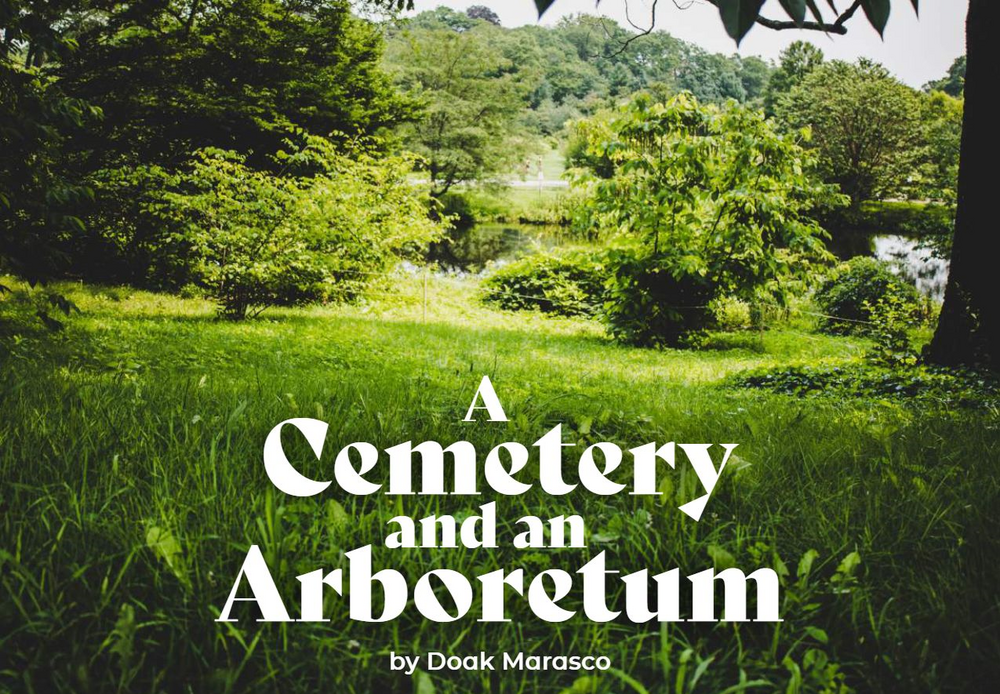(404) 312-6640
A Cemetery and an Arboretum
What exactly is an arboretum? Briefly stated, the word arboretum can be broken down into arbor, which is Latin for “tree”, and the suffix ētum, denoting a collection of plants. The first use of the term arboretum can be traced back to an article in 1833 written by the Scottish landscape designer John Claudius Loudon in The Gardener’s Magazine. As a botanist and horticulturalist, Mr. Loudon was fascinated with showcasing the artistic qualities of trees and shrubs within the landscapes he designed. Individual plant specimens, especially exotics, became a focal point for appreciation and study. His unique style of design, which blends characteristics of both French formal gardens (geometric and symmetrical) and English picturesque gardens (wild and rustic), was described by Loudon himself as gardenesque.
Shortly before Loudon’s death in 1843, he wrote a book entitled On the Laying Out, Planting and managing of Cemeteries and even submitted designs incorporating his stylistic principles for three English cemeteries: Histon Road Cemetery (1842), Southampton Old Cemetery (1842), and Bath Abbey Cemetery (1843). Loudon’s writings and gardenesque style would carry on and influence future architects and planners, including cemetery design, for generations to come. In fact, his interest in botanical diversity, especially trees, and blending of contrasting garden design elements can be seen throughout cemeteries here in the U.S. today.
Fast forward to the present, and many cemeteries, particularly those affiliated with the rural cemetery movement, are embracing the architectural history of their landscapes, encouraging the public to come and enjoy the beauty and diversity of their woody plants. Events such as tree tours, Arbor Day celebrations, and plant-themed scavenger hunts have become common attractions on cemetery grounds. In response to the Covid-19 pandemic, visitation to cemeteries and memorial parks has surged as people seek out safe and tranquil places to escape the stress of everyday life during a global health crisis. Consequently, the public’s perception of cemeteries as parks and arboretums is growing through this renewed discovery of cemetery landscapes.
For their part, cemeterians are going further to promote the history and aesthetics of these natural and woody landscapes by having their cemeteries and memorial parks become accredited as arboretums through a program called ArbNet. Since its inception in 2011, ArbNet, which is coordinated by The Morton Arboretum, has accredited over 500 arboreta globally. Of these, approximately 10% are cemeteries or memorial parks. That’s an impressive statistic that speaks to the influence landscape planners such as John Claudius Loudon had on cemeteries, as well as other gardens and parks.
To become accredited, an applicant must achieve a set list of standards set forth by ArbNet that vary depending on the level of accreditation desired. An arboretum may apply for any of the four levels of accreditation, with Level I criterial set as the program’s entry point. While participants are encouraged to build on the development of their standards and move up through the various levels of accreditation, there is no requirement to do so, and many arboreta find that Level I or Level II is the best fit for their purpose. While there is no requirement to refer to one’s landscape as an arboretum, cemeteries and memorial parks that achieve arboretum accreditation through the ArbNet program join a network of other accredited arboreta that share in promoting and enhancing woody plant conservation, and with this comes recognition within their local communities and among their peers as stewards of their landscapes. Participation in ArbNet is free of charge, and you can find out more here at www.arbnet.org
Mr. Loudon was onto something when he chose to bring attention to the individual beauty of trees and shrubs in the landscape, emphasizing their architectural splendor. His design theories greatly influenced the concept of cemeteries as gardens for all to enjoy. Regardless of whether your cemetery or memorial park is an accredited arboretum, your woody plants tell a story that in turn shapes the identity of your business and stands as a testimonial to your place in the community
Doak Marasco is Manager of Strategic Partnerships for The Davey Tree Expert Company and a Supplier Liaison for the Connecticut Cemetery Association. He is an ISA Board Certified Master Arborist® NE-6393BM and has a B.S. in Urban Forestry from The Pennsylvania State University.






Comments